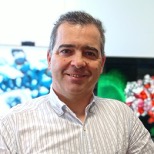
In this seminar I will provide an overview of how defective proteostasis underlies various neurodegenerative diseases characterized by protein deposition. I will unveil our recent discoveries demonstrating the neuroprotective functions of brain proteins from the S100 family. These proteins act as intra and extracellular chaperones, effectively halting the self-assembly and neurotoxicity of tau and amyloid β aggregates. I will delve into the underlying mechanisms of action, particularly focusing on S100B, and will conclude by proposing the hypothesis that S100 proteins collectively form a novel type of protective chaperone network in the nervous system.
1. Hagmeyer et al (2019) Frontiers in Neuroscience https://10.3389/fnins.2019.00640
2. Cristóvão et al (2018) Science Advances https://doi.org/10.1126/sciadv.aaq1702
3. Moreira et al (2021) Nature Communications https://10.1038/s41467-021-26584-2
4. Figueira et al (2022) Journal Molecular Biology https://doi.org/10.1016/j.jmb.2022.167791
5. Moreira and Gomes (2023) Journal Neurochemistry https://doi.org/10.1111/jnc.15756
6. Figueira et al (2023) S100B Front. Neuroscience https://doi.org/10.3389/fnins.2023.1162741
19/04/2024 Prof. Cláudio M. Gomes Faculdade de Ciências da Universidade de Lisboa (Portugal)